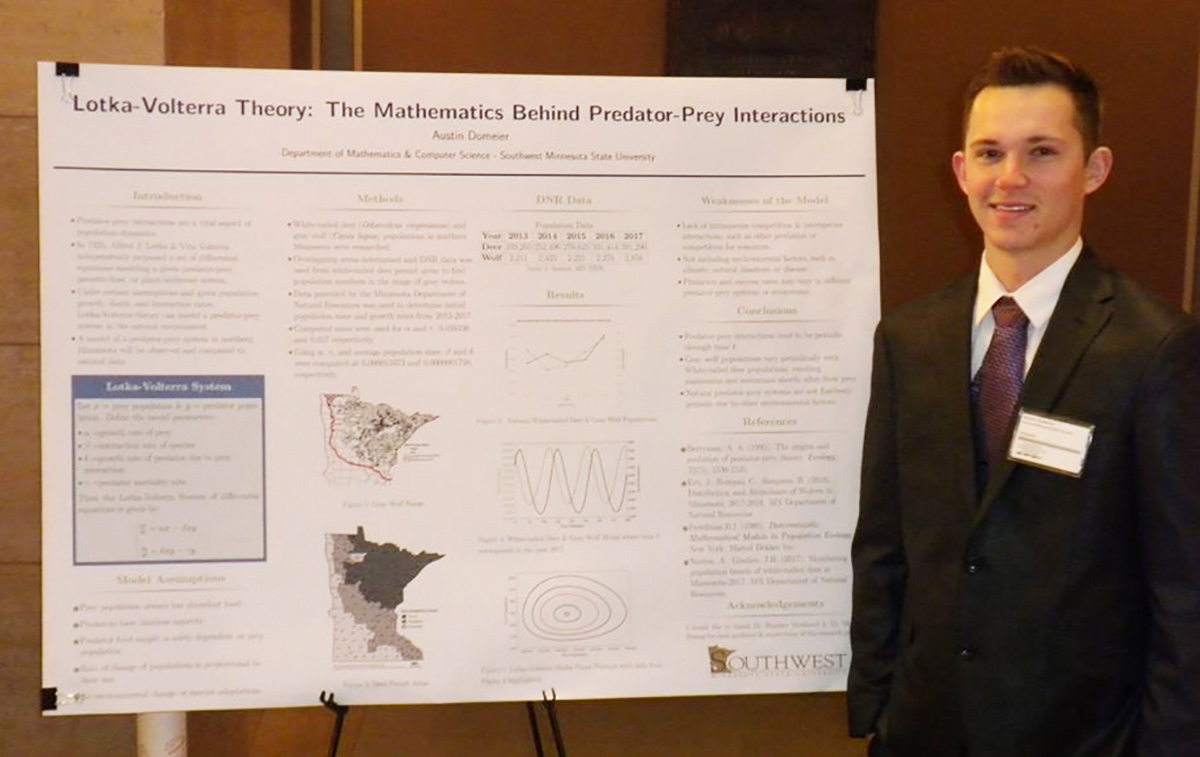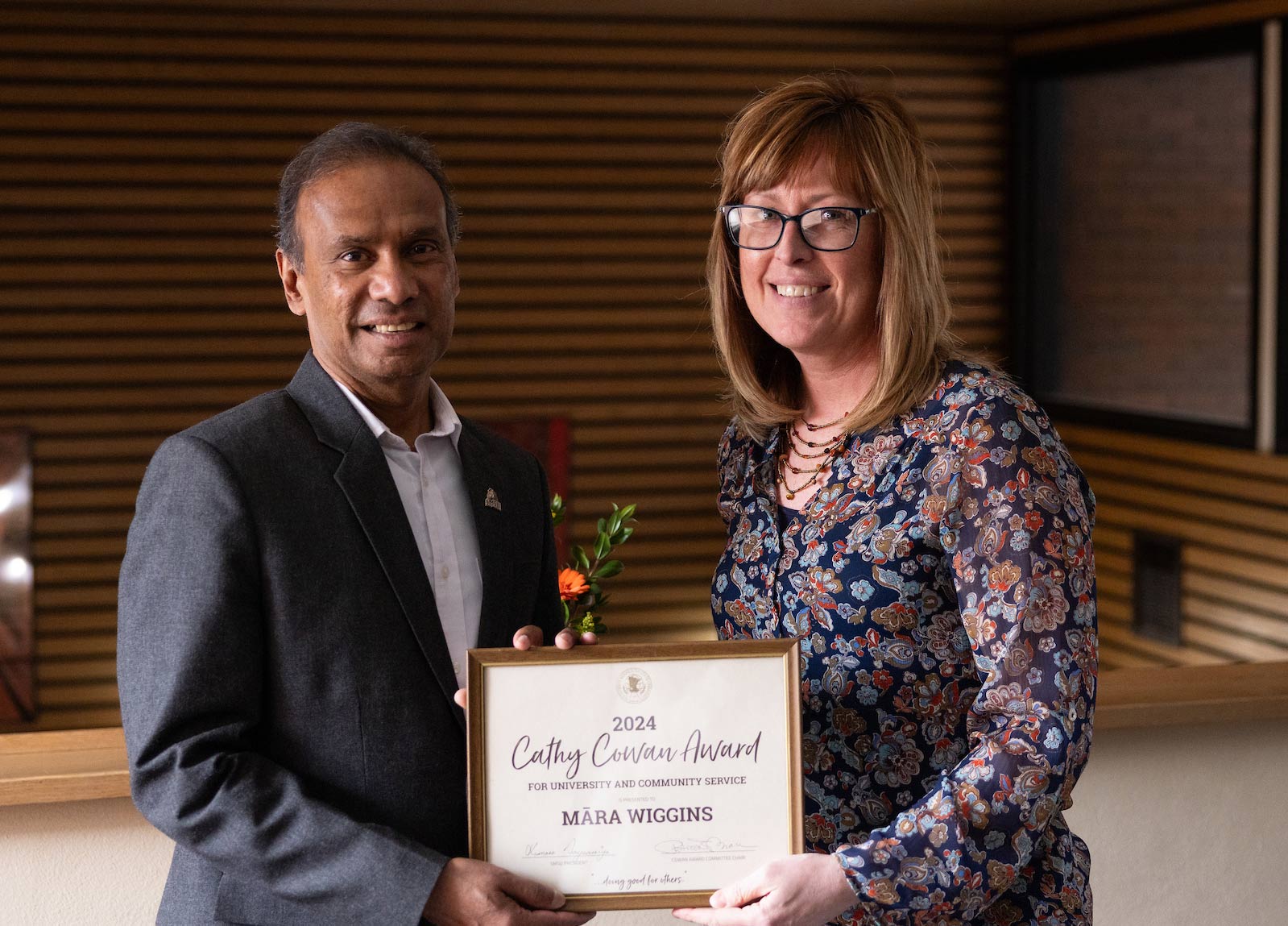Recent Alumnus Austin Domeier ’20 Wins Research Award
Published Tuesday, July 21, 2020
SMSU 2020 alumnus Austin Domeier recently won the ninth annual Minnesota State Conference of Undergraduate Scholarly and Creative Activity Conference poster presentation, in the category of Science/Engineering.
The conference was originally scheduled for April in St. Cloud and was postponed due to COVID-19, and moved to an online format. Entries were later uploaded to a site in May, and questions about the posters could be posed from there.
Judges determined his was the best of the group, and he was notified in June of his first-place honor, which included a $200 cash prize.
Domeier graduated in May with a major in Math, and a minor in Environmental Science, and is currently starting his research as a graduate assistant at South Dakota State, where he is pursuing his master’s degree in Wildlife Sciences within that school’s Department of Natural Resources Management.
His winning poster presentation was entitled “Lotka-Volterra Theory: The Mathematics Behind Predator-Prey Interactions.”
“It’s basically a predator-prey modeling theory,” he said. “It takes into account assumptions that help you model a predator-prey interaction on basically a graph in mathematical terms. It shows predator-prey population changes over time, and how.”
For his study, the predator was the gray wolf and the prey, the whitetail deer. The study studied the two animals as they interacted in northern Minnesota, over the years 2013-17.
“With the way the formula was written you have to assume there are no other predators in the area that are eating; also deer hunters are out of the equation, and other things that might hunt or kill, like cars on the road. Those are thrown out the window and we assume they are not happening for this equation to hold.”
What did he find? “As expected, as the prey population goes up in numbers the predator population goes up, shortly after. It lags just a bit. As the predator number reaches its peak, then the prey population begins to go down. It’s a constant, maximum to minimum, and the predator population has the same sequence, but shortly after. The predator population depends on the prey population.”
He found the idea online “and I liked it because it meshed my major, Math, and my minor, Environmental Science, together.” His data came from the Minnesota DNR, and there was a lot of number crunching involved as it relates to various hunting units in the state versus gray wolf population estimates. “For instance, there’s a lot of hunting units in Minnesota, and estimating how many deer are in a particular hunting unit. Plus, estimating the range of the gray wolf.”
His latest research as part of his master’s program involves “the invasion and spread of Red Cedar trees in south-central South Dakota, by the Missouri River. Historically, there’s a lot of ranches there and with a lot of pasture. (Their growth) has recently become out of control. Under their canopy the grass won’t grow and that affects how many cattle can pasture on that land. Our main goal is to do a cost benefit analysis of these cedar trees and practices to prevent their spread.”
Domeier is an Appleton, Minn., native who attended Lac qui Parle High School. He came to SMSU “because of its small-town feel, its smaller class sizes and it was close to home.” An avid outdoorsman, he is appreciative of the personal attention he received from his advisor, Associate Professor of Mathematics Heather Moreland, and recently-retired Professor of Environmental Science Emily Deaver, who helped him navigate the application process for his graduate assistantship.
“I liked my time at SMSU. It was easy to get to know other students, and the professors really take an interest in you not just as a student, but as a person, and what you want to do with your life.”






